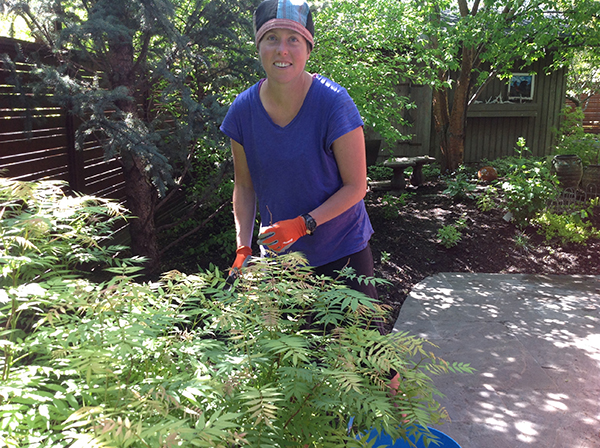June 18, 2014 | Donna Balzer
Making a comeback
A lesson for all gardeners following the flooding of June 2013Caenie's new plant floated away, Laurie lost her large wooden planter and at least one golf course lost all the sand from the bunkers and never got it back. For gardeners and golf courses in the affected areas, the aftermath of the last year's floods is still being dealt with.
When I asked my daughter Chelsie Anderson, who is also a gardener, if there was anything different in her client's yards after last year's floods, she told me about Caenie and Laurie, and was quick to add: "(There are also) lots of dead lawns. The silt was too thick for it to benefit the lawns, so there are lots of dead patches in people's gardens. The priority, obviously, was the house, so often (the homeowners) just shovelled out the house and piled everything onto the lawns and the gardens."
The only solution for large areas of lawn damage is to remove the silt and old sod and install new sod. Lee Cornelius works for the Elbow Springs Golf Course where large patches of sod killed by deep layers of silt last year are still being replaced even though the course re-opened last August.
Caenie's newly planted Hydrangea was never found, so Chelsie added a new one this year. Laurie got her lost
planter back after a neighbour found it a block away, and Lee is part of the crew topping up sand in the Elbow
Springs bunkers after it vanished in last year's flood.

In older yards by the river, lawns are tiny, so re-seeding after silt removal works better than re-sodding because it is easier to incorporate seed into the existing lawns and cheaper than re-sodding the whole works.
In non-flood zones, there are also dead patches of lawn this spring. Dog damage is an annual problem for
some gardeners, and powdery mildew fungus is a particular problem this spring, especially on the north side of the home where snow sat too long. If there is a dead patch of lawn for whatever reason, June is the best month to re-seed in Calgary.
Rake the dead grass away to expose the soil, spread a two-centimetre layer of compost on the area and rake
it lightly to feather it into the existing lawn. Scatter seed on top of the soil and water the reseeded patches daily
until the seed emerges in one to three weeks. Coated grass seed is more expensive than plain seed but holds moisture better so sprouts quicker and more evenly.
Chelsie is also noticing a lot of bugs this year.
"People have repaired their homes and their gardens, but have not replaced all their equipment. Some things are malfunctioning in their gardens, like pumps for their ponds. So this year there is a lot of sitting water, rotting ponds, which could evolve into mosquito problems."
Standing water the depth of a Frisbee will host a family of mosquitoes. All gardeners need to get outdoors and
look for stagnant sitting water in ponds, wheelbarrows or in kids' toys. If ponds can't be rebuilt or repaired,
they should be removed or filled with soil and planted.
Finally, Chelsie is noticing "[Native plants such as] false solomon's seal and snowberry appearing randomly
in gardens" and she is not sure if they came along with the silt or if the seeds of these native plants were dragged in by flood water. Her dilemma is these native plants are so hardy she is not sure if she should just leave them and incorporate them into the landscape or start taking them out. It's a good problem to have for homeowners dealing with so many other losses.
After a chilly start to spring, most gardeners, including Chelsie, are topping up soil levels and bringing gardens back to life. Asked if there is a lot of fear in her clients, she is optimistic.
"I think people feel like it is past and that they will have time before the next big one."
Let's hope they are right!
Balzer is a garden writer and speaker. Check out her blog at www.gardenguru.net or follow on twitter @NoGuffGardener
Tagged: flood | Garden | Guest Column




